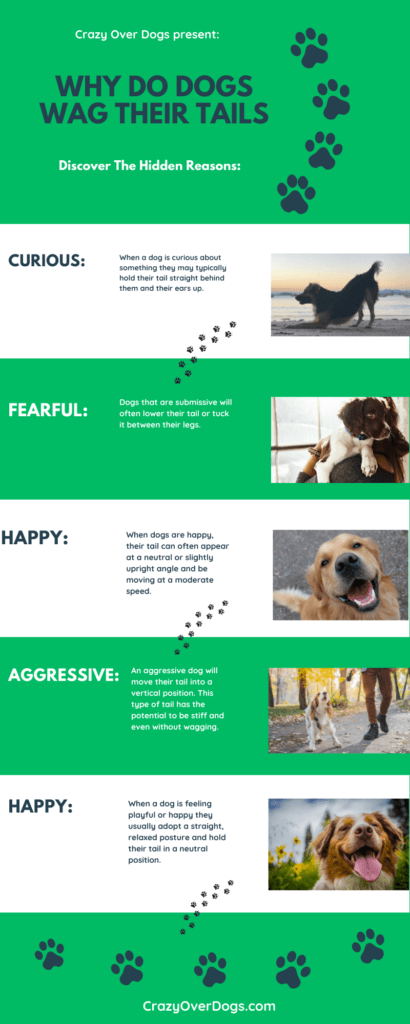Why do dogs wag their tails when you talk to them is one of the more common questions among dog owners. See Infographic below.
The biggest misunderstandings about dogs are that a wagging tail means they’re friendly. This isn’t always the case and many other factors come into play when considering the reason for a dog’s tail wag.
The content takes around 4 minutes to read, but if you are in a hurry, we have also included a table of contents below so you can see at a glance what the content is.
Make sure to check out today’s deals to SAVE money on dog products by clicking on the graphic below. Don’t miss out.
This post contains affiliate links and I will be compensated if you make a purchase after clicking on my links.
———————————-
Table Of Contents
Why Do Dogs Do Wag Their Tails Infographic:

Click Here For Full-Size Image Plus Embed Code For Your Website
———————–
There are numerous things to consider when trying to assess a dog’s tail wag, namely that different types of tail movements are indicative of different types of behavior.
The following are some of the emotions that a dog might convey with its tail.
They Are Curious:
When a dog is curious about something they may typically hold their tail straight behind them and their ears up. They are often on their feet with an attentive posture and may wag their tail for added interest.
Fearful:
Dogs may show signs of submission by lowering their tail. In this position, the dog is more likely to feel threatened and won’t want to be harmed. A submissive position of the tail may or may not be accompanied by a tail wag.
If your dog is showing this sign, it’s best to avoid petting them so they don’t feel isolated which could explain the sudden aggression.
Happy:

When dogs are happy, their tail can often appear at a neutral or slightly upright angle and be moving at a moderate speed.
They usually have more loose, relaxed tail movements. The tail may even sway around in circles. This is known as a circle wag or a helicopter tail.
Most of the time the more excited a dog is, the faster its tail wags.
Aggressive:
An aggressive dog will oftentimes move their tail into a vertical position that curves over its back. This type of tail has the potential to be stiff and even without wagging.
If your dog is calm and submissive, it will usually have its tail hanging down with the tip brushing against the ground. This process is often used to indicate submission to other animals (or people). If they are instead using an upright posture and wagging their tail, it likely means that they are aroused or ready to fight.
Dogs that show signs of aggression should not be disturbed as they are likely to bite if somebody tries to get together with them.
Happy:
When a dog is feeling playful or happy they usually adopt a straight, relaxed posture and holds its tail in a neutral position. They will start wagging their tail rapidly once they can sense that you can see them and know that they are excited or happy.
FAQS:
—————————-
Dog tails are an excellent way for them to communicate their feelings. The position of the tail, as well as how quickly it is wagged, can indicate their mood.
The wag of a dog’s tail is like them talking in their native language. The position of their tail will act as words. The speed at which a dog is wagging their tail can be seen as how loud they are speaking. A faster wag of the tail would indicate a louder voice.
Conclusion:
It’s important to note that dogs use their whole body and sometimes their tails, to express how they feel. It’s our job as pet owners to do our best and try and figure out what they’re feeling so we can react accordingly.
Always be alert and sensitive to your dog’s body language, for example when they don’t want to go home or if an animal scares them. Happy and safe dogs make a happier family.
We hope that the above information has helped answer the common question of Why do dogs wag their tails when you talk to them.
———————————–
Disclaimer: All material on this website is provided for your information only. It may not be construed as medical advice. No action or inaction should be taken based solely on the contents of this information. Instead, readers should consult appropriate health professionals or veterinarians on any matter relating to their pet’s health and well-being. The publisher is not responsible for errors or omissions.


